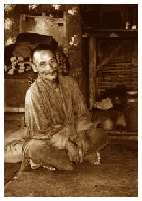'Ole language
| ’Ole | |
|---|---|
| ’Olekha, Monkha, Monpa, Ole Mönpa | |
| Black Mountain Monpa | |
| Region | Bhutan |
Native speakers | 500 (2007)[1] |
|
Sino-Tibetan
| |
| Tibetan script | |
| Language codes | |
| ISO 639-3 |
ole |
| Glottolog |
olek1239[2] |

'Ole, also called 'Olekha or Black Mountain Monpa, is a Sino-Tibetan language spoken by about 1000 people in the Black Mountains of Wangdue Phodrang and Trongsa Districts in western Bhutan. The term 'Ole refers to a clan of speakers.[3]
Locations
According to the Ethnologue, Olekha is spoken in the following locations of Bhutan.
- Trongsa District: 3 enclaves west of Mangde river
- Wangdue Phodrang District: Adha, Jangji, Rukha, Thrumzur, and Wangling villages
Dialects are separated by the Black Mountains.
History
'Ole was unknown beyond its immediate area until 1990, and is now highly endangered, and was originally assumed to be East Bodish.[4] George van Driem described 'Ole as a remnant of the primordial population of the Black Mountains before the southward expansion of the ancient East Bodish tribes.[5]
More recently, Gwendolyn Hyslop, with the agreement of van Driem, has suggested that 'Ole is an isolated Sino-Tibetan language heavily influenced by East Bodish.[6] Because of its small amount of cognates with East Bodish languages, Blench and Post provisionally treat 'Ole as an isolate[4]
External relationships
The distantly related Tshangla language of eastern Bhutan, also called "Monpa" and predating Dzongkha, also belongs to the Sino-Tibetan languages.[5][7] Although 'Ole is most closely related to the Bumthang language, both being East Bodish languages, Tshangla and related languages form a sister branch not to the East Bodish group, but to its parent Bodish branch. Thus the ambiguous term "Monpa" risks separating languages that should be grouped together, while grouping languages together that are quite separate.[8]
References
- ↑ ’Ole at Ethnologue (18th ed., 2015)
- ↑ Hammarström, Harald; Forkel, Robert; Haspelmath, Martin; Bank, Sebastian, eds. (2016). "Olekha". Glottolog 2.7. Jena: Max Planck Institute for the Science of Human History.
- ↑ van Driem, George (July 1992). "In Quest of Mahākirānti" (PDF). Center of Nepal and Asian Studies Journal. 19 (2): 241–247. Retrieved 2011-10-23.
- 1 2 Blench, R. & Post, M. W. (2013). Rethinking Sino-Tibetan phylogeny from the perspective of Northeast Indian languages
- 1 2 van Driem, George L. (1993). "Language Policy in Bhutan" (PDF). London: SOAS, University of London. Archived from the original on 1 November 2010. Retrieved 2011-01-18.
- ↑ van Driem, George L. (2011). "Tibeto-Burman subgroups and historical grammar". Himalayan Linguistics Journal. 10 (1): 31–39. Archived from the original on 12 January 2012.
- ↑ van Driem, George (2001). Languages of the Himalayas: An Ethnolinguistic Handbook of the Greater Himalayan Region. Brill. pp. 915 et seq.
- ↑ Andvik, Erik E. (2010). A Grammar of Tshangla. Tibetan Studies Library. 10. Brill Publishers. pp. 4–7. ISBN 9004178279.
Further reading
- Namgyel, Singye. The Language Web of Bhutan. Thimphu: KMT.
- van Driem, George L; Karma Tshering of Gaselô (collab) (1998). Dzongkha. Languages of the Greater Himalayan Region. Leiden: Research School CNWS, School of Asian, African, and Amerindian Studies. ISBN 905789002X.
- van Driem, George (2001). Languages of the Himalayas: An Ethnolinguistic Handbook of the Greater Himalayan Region: Containing an Introduction to the Symbiotic Theory of Language. Brill. ISBN 9004120629.
- van Driem, George (2007). "Endangered Languages of Bhutan and Sikkim: East Bodish Languages". In Moseley, Christopher. Encyclopedia of the World's Endangered Languages. Routledge. p. 295. ISBN 070071197X.